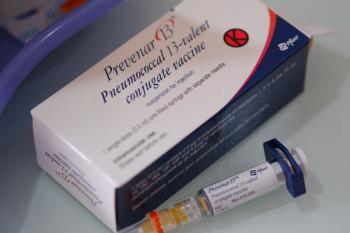
- Drug Topics July 2020
- Volume 164
- Issue 7
Pharmacists Are Key Players in Asthma Management
“Pharmacists should ensure that patients have a written asthma action plan.”
Pharmacists can play an important role in helping patients with asthma manage their disease through drug therapy assessment and education.
Asthma Pharmacotherapy and Counseling Pearls
Pharmacists should ensure that patients have a written asthma action plan that includes their medications with directions, steps to take if symptoms worsen, and means of accessing medical care. Pediatric patients will generally need nebulizers, pressurized metered dose inhalers, or face masks attached to a metered dose inhaler, depending on age, to ensure the correct dose of medication is delivered into the lungs. Patients should continue taking their current asthma medications and discuss any concerns with their pharmacist and other health care providers during the COVID-19 pandemic.1
Pharmacists can also help ensure that patients have an adequate supply of medications. The Global Initiative for Asthma recommends that all adults and adolescents with asthma receive inhaled corticosteroids (ICSs) as long-term control medications; experts consider these the most effective anti-inflammatory drugs because they reduce the risk of exacerbations, hospitalizations, and death.2 Examples include fluticasone (Flovent HFA), budesonide (Pulmicort Flexhaler), and beclomethasone (Qvar RediHaler), and they have a low risk of adverse effects (AEs).2,3 Local AEs may include oral candidiasis and dysphonia (hoarse voice), which patients can minimize by using a spacer and rinsing with water and spitting out after inhalation.2
Long-acting beta2 agonists (LABAs) are bronchodilators that practitioners can add to an ICS if patietns require combination therapy.3
Combination ICS-LABA inhalers include fluticasone-salmeterol (Advair Diskus), budesonide-formoterol (Symbicort), and formoter- olmometasone (Dulera). Importantly, patients must always use LABAs with ICSs because evidence shows that LABAs used alone may increase the risk of a severe asthma attack.2 AEs associated with LABAs include tachycardia, headache, and cramps.2
Leukotriene receptor antagonists such as montelukast (Singulair), zafirlukast (Accolate), and zileuton (Zyflo) are another option for controller therapy, specifically in children.2 The FDA recently issued a drug safety communication about the addition of a boxed warning for montelukast because of the risk of serious mental health AEs, including suicidal thoughts or actions.4 Practitioners should weigh the benefits and risks before prescribing montelukast for patients with asthma. Patients taking montelukast should discontinue the medication and contact their pharmacist and other health care providers immediately if they experience any behavior- or mood-related changes.5
Rescue medications provide rapid, short-term symptom relief during an asthma attack.4 Patients should take short-acting beta2 agonist bronchodilators (SABAs) such as albuterol (ProAir HFA, Ventolin HFA) and leval-buterol (Xopenex) only as needed and at the lowest dose, and SABAs should not be used without an ICS.2,3 Patients may experience tremor and tachycardia with initial use of SABAs, but tolerance develops with regular use.3 Ipratropium (Atrovent) is a short-acting anticholinergic inhaler that is less effective than SABAs as a rescue medication, with dry mouth as a common AE.2 Practitioners should prescribe systemic corticosteroids (eg, prednisone, methylprednisolone) only short term to treat severe asthma symptoms, as long-term use can cause serious AEs, including diabetes, hypertension, osteoporosis, and cataracts.2 Corticosteroid use should be tapered if the treatment duration is longer than 2 weeks. Short-term use of corticosteroids may cause hyperglycemia, insomnia, increased appetite, and mood changes.2
References
1. May is asthma awareness month. CDC. Updated May 4, 2020. Accessed May 18, 2020.
2. Coronavirus disease 2019 (COVID-19): people with moderate to severe asthma. CDC. Updated April 2, 2020. Accessed May 20, 2020.
3. Asthma associated with longer time on ventilators for younger COVID-19 patients. News release. Rush University Medical Center. May 15, 2020. Accessed May 21, 2020.
4. COVID-19 and asthma: what patients need to know. American Academy of Allergy, Asthma & Immunology. Updated April 23, 2020. Accessed May 22, 2020.
5. Pocket guide for asthma management and prevention for adults and children older than 5 years. Global Initiative for Asthma. April 3, 2020. Accessed May 22, 2020.
6. Asthma. Mayo Clinic. September 13, 2018. Accessed May 24, 2020.
7. FDA requires stronger warning about risk of neuropsychiatric events associated with asthma and allergy medication Singulair and generic montelukast. News release. FDA. March 4, 2020. Accessed May 23, 2020.
8. Biologics for the management of severe asthma. American Academy of Allergy Asthma & Immunology. Updated March 22, 2019. Accessed May 24, 2020.
Articles in this issue
over 5 years ago
Go to Bat for Patients in Needover 5 years ago
UMass Memorial Provides Model for Curbside Medication Deliveryover 5 years ago
Microbiome Research Calls for Due Diligence in Pharmacyover 5 years ago
COVID-19 Testing Is Not an Automatic Choice for Pharmacistsover 5 years ago
Psychedelic Medicines for Pain Go Mainstreamover 5 years ago
Pharmacies Must Prepare for a COVID-19 Vaccineover 5 years ago
Addressing Diabetes Management Disparities in Minority ChildrenNewsletter
Pharmacy practice is always changing. Stay ahead of the curve with the Drug Topics newsletter and get the latest drug information, industry trends, and patient care tips.















































































































